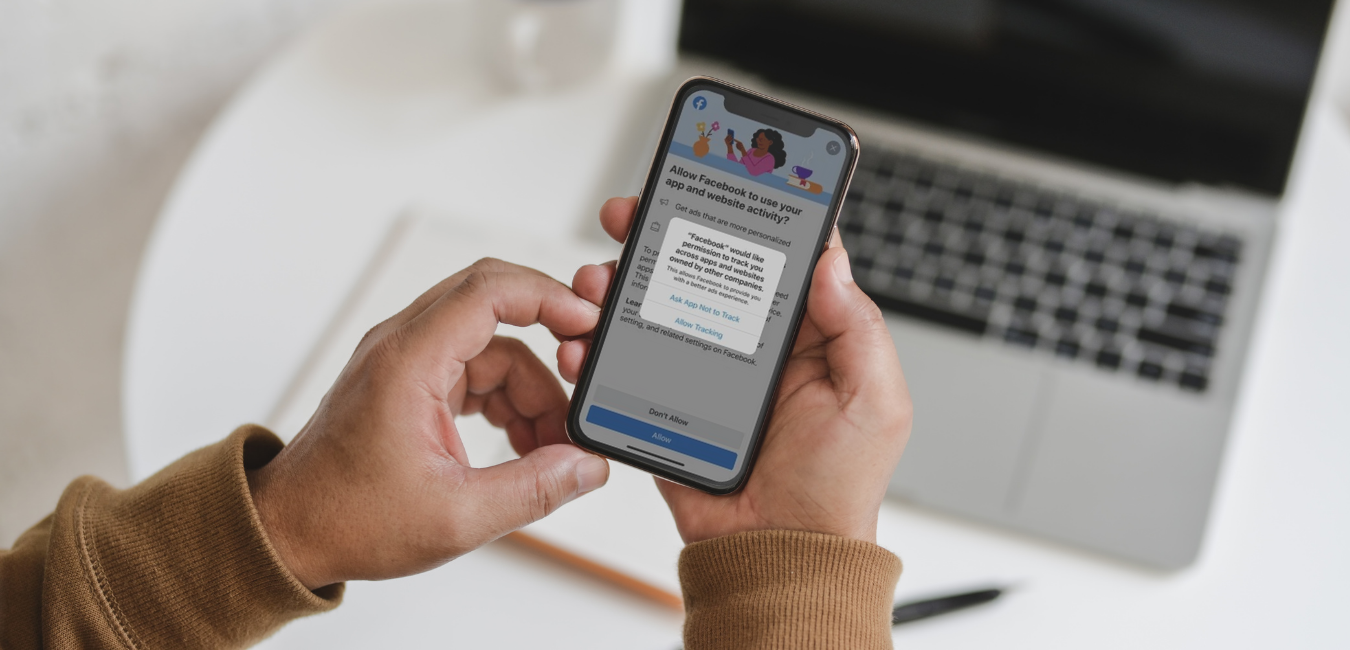iOS 14.5 is shaping how Facebook campaigns are behaving more than marketers might be aware. Starting in April 2021, iPhone users could opt out and stay anonymous to their apps, websites, or mobile activities. As a result, Facebook campaign performance is erratic due to less data visibility from iOS devices:
Let’s review five major impacts of Facebook media & measurement on iOS Devices:
- It’s taking longer to leave the learning phase. Everything leading to a website has to be click-based. Facebook and Instagram can only see website sessions that start w a click. There is almost zero View Through conversions for iOS devices.
- Almost all conversions will be in the same session. If a user opts out, there is not an attribution window for iOS.
- Retargeting off website visitors has largely been eliminated for iOS users.
- Every step on the user journey on the website counts as an ‘Event.’ However, Facebook can only report on one event for iOS users. It’s why event prioritization is necessary.
- As a result of Facebook seeing fewer website events from iOS, some direct response campaigns optimize to Android and Desktop.
iOS vs Android in Direct Response Campaigns
The above chart compares iOS and Android FB spend for direct response efforts reliant on the Facebook Pixel for optimizations. The July numbers show that Android spend was 3x that of iOS.
Skewing Facebook spend is very likely to be the reaction of seeing more website data from Android users than the anonymity of iPhone mobile browsers.
Knowing this, Strike Social Team started down an optimization path to manage efficiency and volume using the same pixel-based solution until better options could be developed.
Comparison of Regional Facebook Direct Response Campaigns
Regional Campaign A uses a broader mix of video and statics to drive to their landing pages. As a result, video Cost Per Click has been more cost-effective and drives more engagements.
Regional Campaign B uses static media but collects all leads within the Facebook environment, allowing the platform to optimize the campaign.
Regional Campaign C is primarily based on statics and drives to a lead form on a landing page.
What We Now Know
Focus On Facebook Integration
After the Apple iOS 14.5 updates, one of the best ways to track, optimize, and achieve a high ROAS (Return On Ad Spend) is to make your campaign native to the platform. For instance, looking at options outside the website pixel will provide more consistency in conversions and spending. At the same time, creating retargeting opportunities native to Facebook compared to the website events will help improve CPL and conversion campaigns.
iOS vs Android – Optimizing Campaign Leads within Facebook
Another approach to bring down acquisition costs within Facebook is greater integration with the platform. Aiming to keep leads and even sales within Facebook as a native activity will be faster to optimize.
Campaigns optimizing to engagements are often seeing more iOS spend. As an illustration, Strike Social data shows around 70-80% iOS spending on the average day when optimizing lead campaigns on Facebook.
Decreasing Audience Pool and Retargeting Leads
The current setup often over-emphasizes success via the Facebook pixel, including delayed Facebook reporting. Therefore, due to miscalculations, marketers need to verify website transactions via other platforms, affecting the campaign performance and advertisers’ real-time decisions.
On top of this, it also hinders optimization and retrieves few data points. It now creates a chain of reaction that cause to shrink the Facebook retargeting pool to iOS users.
Keeping up with Facebook’s New Rules
Despite shaking the advertising industry with these privacy updates, based on a mediapost.com article, as of early September 2020, only 59% of user acquisition managers have reacted and decided to overhaul their 2021 target KPI’s, while others chose to weather the storm.
Adding a few steps to the process will be a good option rather than stepping away from one of the biggest social media platforms. The Apple iOS 14.5 privacy is just beginning a more pro-consumer direction for these tech companies that significantly impact the digital advertising industry.








